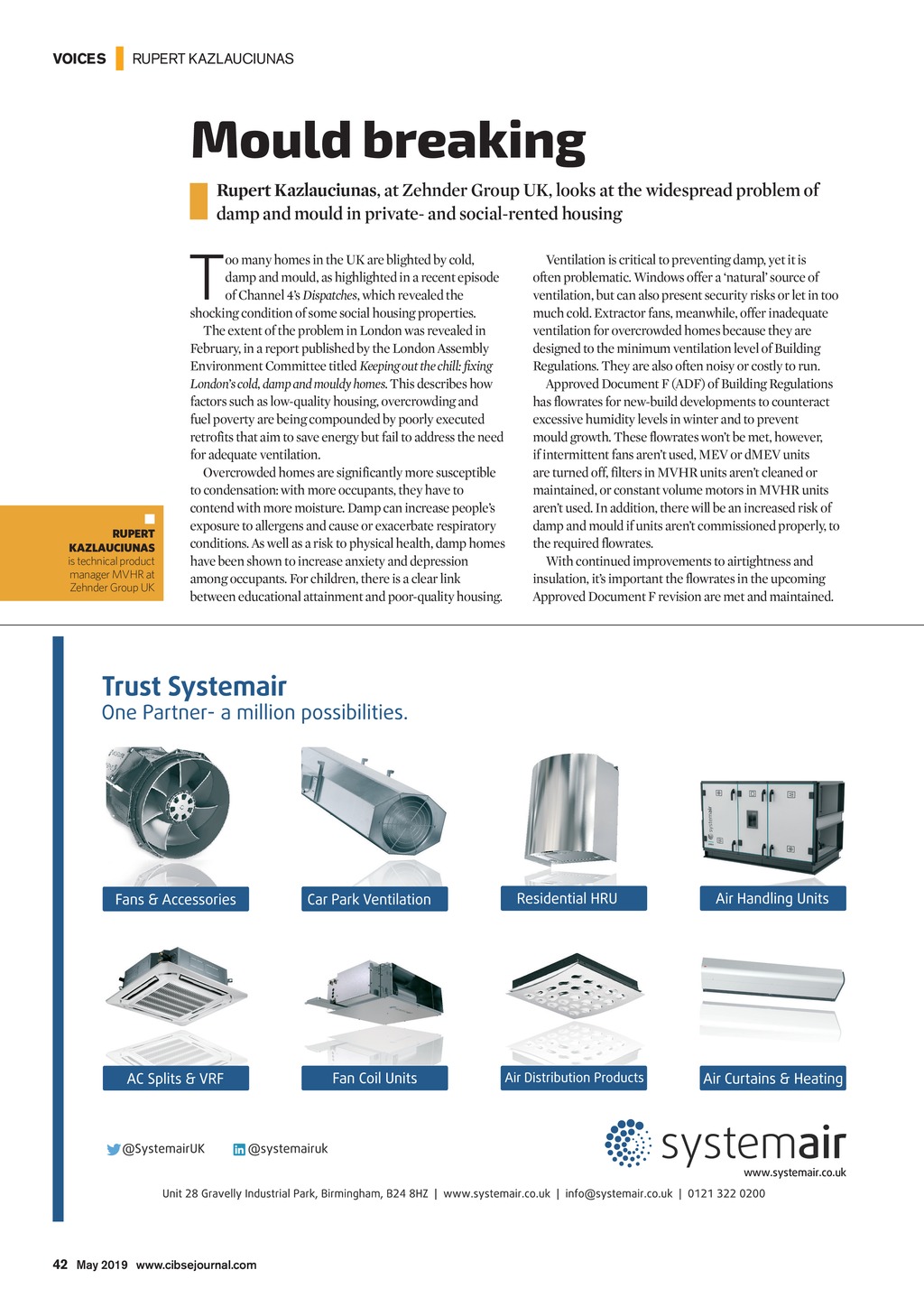




VOICES | RUPERT KAZLAUCIUNAS Mould breaking Rupert Kazlauciunas, at Zehnder Group UK, looks at the widespread problem of damp and mould in private- and social-rented housing T RUPERT KAZLAUCIUNAS is technical product manager MVHR at Zehnder Group UK oo many homes in the UK are blighted by cold, damp and mould, as highlighted in a recent episode of Channel 4s Dispatches, which revealed the shocking condition of some social housing properties. The extent of the problem in London was revealed in February, in a report published by the London Assembly Environment Committee titled Keeping out the chill: xing Londons cold, damp and mouldy homes. This describes how factors such as low-quality housing, overcrowding and fuel poverty are being compounded by poorly executed retrofits that aim to save energy but fail to address the need for adequate ventilation. Overcrowded homes are significantly more susceptible to condensation: with more occupants, they have to contend with more moisture. Damp can increase peoples exposure to allergens and cause or exacerbate respiratory conditions. As well as a risk to physical health, damp homes have been shown to increase anxiety and depression among occupants. For children, there is a clear link between educational attainment and poor-quality housing. Ventilation is critical to preventing damp, yet it is often problematic. Windows offer a natural source of ventilation, but can also present security risks or let in too much cold. Extractor fans, meanwhile, offer inadequate ventilation for overcrowded homes because they are designed to the minimum ventilation level of Building Regulations. They are also often noisy or costly to run. Approved Document F (ADF) of Building Regulations has flowrates for new-build developments to counteract excessive humidity levels in winter and to prevent mould growth. These flowrates wont be met, however, if intermittent fans arent used, MEV or dMEV units are turned off, filters in MVHR units arent cleaned or maintained, or constant volume motors in MVHR units arent used. In addition, there will be an increased risk of damp and mould if units arent commissioned properly, to the required flowrates. With continued improvements to airtightness and insulation, its important the flowrates in the upcoming Approved Document F revision are met and maintained. www.systemair.co.uk 42 May 2019 www.cibsejournal.com CIBSE May19 pp41-42 Air Con News.indd 42 26/04/2019 17:11